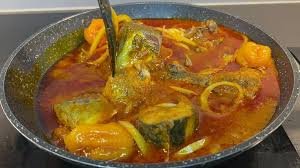Nutrition
Hungry pupils, weak Policies: Why education reform must start with nutrition

In every district across Ghana, children sit in classrooms with their books open but their minds closed off by hunger. Teachers try their best, parents make sacrifices, and government rolls out curriculum reforms.
Yet the invisible barrier remains: an empty plate. Nutrition is the silent factor sabotaging Ghana’s education system, and until policymakers treat it as such, the promise of quality education will remain unfulfilled.
Picture a classroom in rural Ghana. A young boy sits at his desk, his head resting on his arms. His teacher calls on him to read, but his voice is faint and his words stumble. He has not had a proper breakfast. At home, the family eats mostly starchy staples, with little protein or micronutrients. His body is present in school, but his mind is absent.
The missing piece in education policy
Education reforms often focus on infrastructure, teacher training, or examination standards. But without nutrition, these investments deliver half their potential. A child who is stunted in the first five years of life enters school already disadvantaged, their brain underdeveloped, their ability to concentrate impaired. For adolescent girls, anemia robs them of energy, increasing absenteeism and weakening their future prospects.
This is not just a health issue. It is a policy failure when education strategy ignores nutrition. Policymakers must recognise that learning outcomes are directly tied to what children eat before and during school hours.
School Feeding: A missed opportunity
The Ghana School Feeding Programme was designed to bridge this gap, and it has succeeded in drawing children into classrooms. But too often the meals are monotonous, nutrient-deficient, and unbalanced, providing calories without nourishment. A plate of plain rice may temporarily silence hunger pangs, but it cannot build sharp minds or strong bodies.
Here lies the policy challenge: the programme must shift from feeding for numbers to feeding for nutrition. That requires clear standards, consistent funding, and strong monitoring to ensure that meals truly meet the needs of growing children.
What leaders must do
If Ghana wants to close its education gaps, nutrition must be integrated into the core of education planning. This means:
Making nutrition a key performance indicator in the Ministry of Education’s agenda.
Revising school feeding contracts to demand balanced meals with proteins, vegetables, and micronutrients.
Aligning agriculture policy with school meals, so local farmers supply diverse, nutritious foods.
Ensuring that adolescent girls receive iron supplementation through schools to combat anemia.
A call to stakeholders
Parliament must treat school nutrition with the same urgency as curriculum reforms. District assemblies must prioritise nutritious meal provision in their education budgets. Development partners and CSOs must hold government accountable for not just how many children are fed, but how well they are nourished.
Because the truth is simple: Ghana cannot build a skilled workforce, a competitive economy, or a prosperous future on the foundation of hungry, undernourished children.
The future of our education system does not begin with textbooks or blackboards. It begins with a plate of food, and the policies that ensure it is nourishing.
Feature article by Women, Media and Change under its Nourish Ghana: Advocating for Increased Leadership to Combat Malnutrition Project in collaboration with Eleanor Crook Foundation
Join our WhatsApp Channel now!
https://whatsapp.com/channel/0029VbBElzjInlqHhl1aTU27
Nutrition
Nutrition and Breast Cancer: Why What You Eat Matters

October is Breast Cancer Awareness Month, a time when the world turns pink to remind us that early detection and prevention save lives. But beyond the screenings and campaigns, there’s another powerful prevention tool many people overlook: nutrition.
Emerging research shows that what we eat can influence our risk of developing breast cancer. Diets high in processed foods, red meat, and refined sugars can increase inflammation and disrupt hormones—conditions that support the growth of cancer cells.
On the other hand, a diet rich in fruits, vegetables, legumes, and whole grains provides the antioxidants and nutrients the body needs to protect cells from damage.
Foods like tomatoes, leafy greens, nuts, and fatty fish (such as salmon and sardines) are especially beneficial. They help reduce inflammation and support hormone balance, both critical in breast health. Meanwhile, limiting or avoiding alcohol, stopping smoking, and maintaining a healthy body weight are proven ways to lower one’s risk.
Nutrition alone isn’t a guarantee against cancer, but it’s a vital part of a healthy lifestyle that also includes regular exercise, adequate sleep, and routine breast checks.
At Women, Media and Change (WOMEC), we continue to advocate for women’s health through information and empowerment. We urge women everywhere to eat right, get screened, stay informed, and take charge of their well-being.
Every healthy choice brings you one step closer to prevention. The right diet doesn’t just nourish your body—it could help save your life.
Feature article by Women, Media and Change under its “Nourish Ghana: Advocating for Increased Leadership to Combat Malnutrition” Project.
Join our WhatsApp Channel now!
https://whatsapp.com/channel/0029VbBElzjInlqHhl1aTU27

Nutrition
Plantain Pizza

Ingredients
• 2 ripened plantains
• 6 eggs
• 1 bottle vegetable oil
• 2 large onions
• 2 large tomatoes
• Bell pepper (green, red, yellow) – 1 each
• Cheese (optional)
• 5 sausages
• Seasoning
• Salt to taste
• 3 tablespoonfuls of curry powder
• 2 tablespoonfuls of thyme powder
Method
Wash and cut the ripened plantains into smaller round shapes. Sprinkle some salt on them and mix thoroughly.
Preheat oil in a pan and fry the plantains until golden brown, then set aside.
Break the eggs into a bowl, add a pinch of salt and seasoning, and whisk together.
Pour some oil into a pan and add diced onions, bell peppers, and fresh tomatoes. Add chopped sausages and lightly season with a pinch of salt, seasoning, curry, and thyme powder.
Allow to fry for about three minutes, then pour the mixture into the bowl of whisked eggs and mix to form a uniform blend.
Pour the mixture into a pan and neatly arrange the fried plantains on top. Sprinkle cheese over it (optional).
Cover the pan and cook under low heat for about 15 to 20 minutes until set and golden.
Remove from heat, transfer onto a flat plate, and cut into triangular slices.
Serve and enjoy your delicious Plantain Pizza! 🍕
By Theresa Dzifa Tsetse
Join our WhatsApp Channel now!
https://whatsapp.com/channel/0029VbBElzjInlqHhl1aTU27







